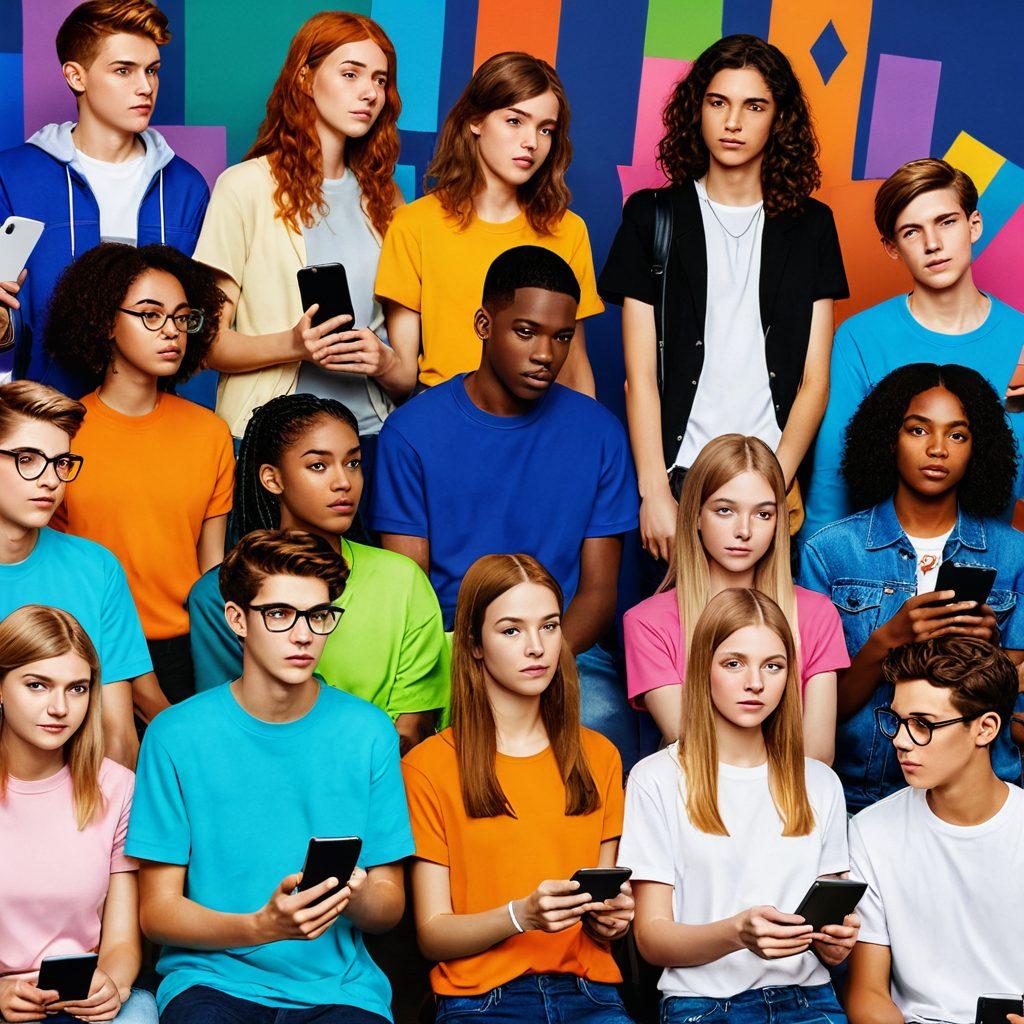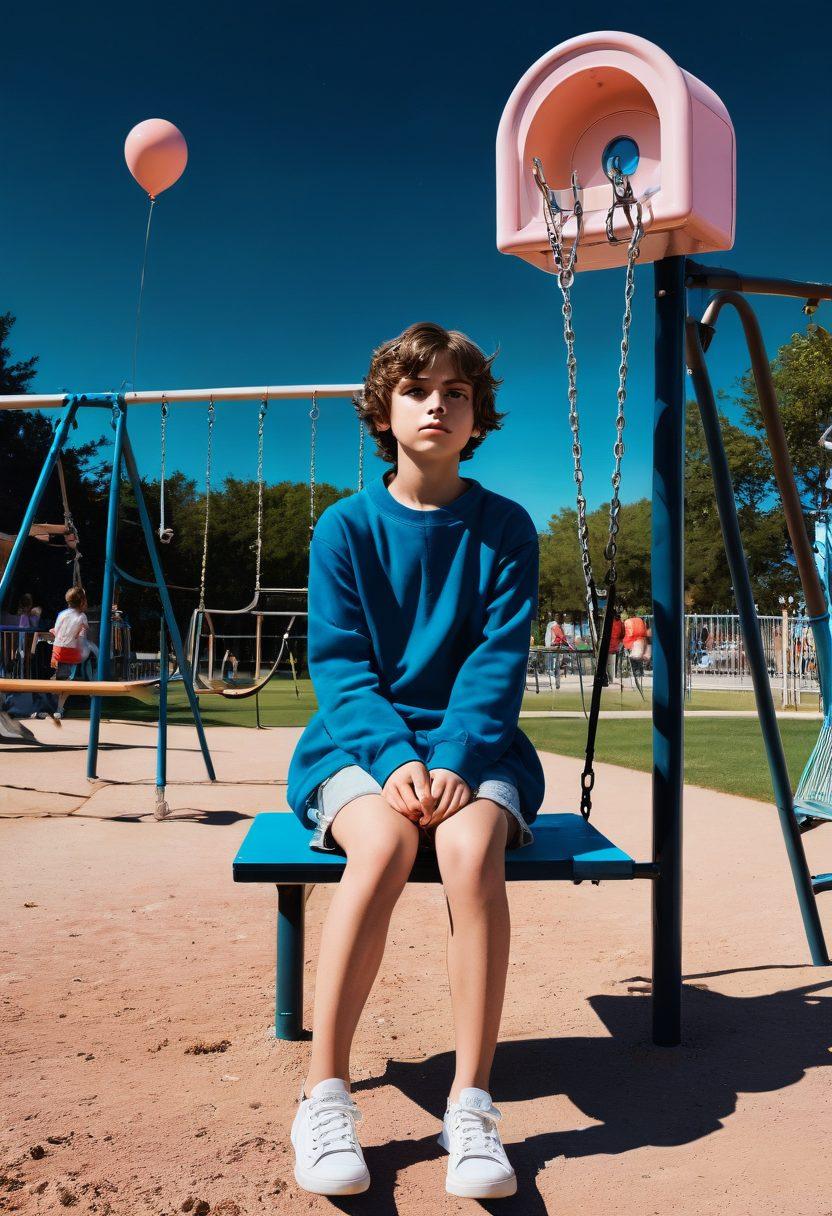Navigating the Controversial Waters of Youth Culture: Understanding Legal Boundaries and Digital Ethics
Navigating the turbulent waters of youth culture can sometimes feel like walking through a legal minefield. The mere mention of 'age of consent' can ignite fiery debates and controversy. This topic, while rooted in legal issues, strikes at the heart of societal norms and values. What does it mean for our teens when legal boundaries are set? Are these rules a protective measure, or do they blur the lines of personal freedom? In a world where digital ethics are still being defined, understanding the age of consent and its repercussions is more essential than ever.
To many, discussions around 'jailbait' and 'forbidden' relationships may seem like a taboo subject. However, these conversations are crucial as they intertwine with youth culture and the dynamics of social media. The rise of smartphones and online platforms has heightened exposure to 'inappropriate material,' leading adolescents to encounter sensitive content that previous generations had only fractionally experienced. How do we navigate these waters responsibly while still recognizing the rights of minors? It is vital we engage in dialogue about what's considered 'risque' within our rapidly changing society.
Questions abound regarding the implications of the age of consent on youth behavior. Are adolescents aware of the legal consequences of their actions? Do they fully grasp the risks involved in engaging with digital platforms that inherently flirt with boundaries? As parents, educators, and mentors, we are tasked with not only teaching young people the rules but also the reasoning behind these rules. It’s not merely about prohibiting behavior but fostering an understanding of digital ethics that encourages online safety and respect for themselves and others.
The intersection of youth culture and legal limitations often breeds confusion. One might ponder: How can the rigidity of these regulations coexist with the fluidity of adolescent relationships? Content moderation and social media guidelines often seem unfathomable to the youth who navigate their worlds at breakneck speed. As we strive to create environments free from exploitation, we must remain aware that the restrictions placed on young people's desires can feel constricting. Instead of implementing a hard-handed approach, let's aim to engage and educate, transforming what can easily become a forbidden topic into an open discussion.
As we delve deeper into these conversations, we must also remember the empowerment that comes alongside knowledge. Educating youth about their rights in relationships, both offline and online, and reinforcing the importance of consent can pave the way for healthier interactions. It is through understanding these legal frameworks and their implications that young people can thrive ethically in their relationships and digital encounters. How can we collectively ensure that our adolescent youth engage positively with one another in an age that feels so fraught with pitfalls? This journey towards enlightenment is not just necessary—it is imperative.
Digital Ethics Decoded: Balancing Teen Freedom and Online Safety in a Controversial Landscape
In today’s fast-paced digital age, the lines that once clearly defined youth culture, legal boundaries, and digital ethics have become increasingly blurred. Adolescents are navigating an online landscape rife with both opportunity and peril, leading to a heated controversy regarding what is appropriate for minors. Digital platforms, many of which have become the hubs of youth expression, are now questioned for the very content they host. How do we create a safe haven for young minds while also allowing them the freedom to express themselves? The stakes are high, as adolescents learn to distinguish between the acceptable and the forbidden in a world that often seems to revel in the risqué.
Consider this: the internet is like a vast ocean, filled with both treasures and traps for the unprepared. Teenage users venture into these waters, sometimes unknowingly encountering jailbait, inappropriate material, or sensitive content that they might not be ready to handle. The controversy around underage individuals accessing explicit content raises pressing questions about age of consent and legal issues—how do we protect our youth while also respecting their autonomy? This delicate dance between freedom and safety isn't just a dilemma for parents and guardians; it’s a community-wide discussion that requires all of us to engage thoughtfully with evolving social media guidelines.
The digital ethics surrounding youth culture come into play as we grapple with the implications of content moderation. It's a tightrope act: businesses must balance allowing self-expression and ensuring safe online environments. Policies aimed at prohibiting certain content can be seen as necessary safeguards, but they often find themselves at odds with the youthful desire to explore and engage with taboo subjects. What may seem like a forbidden pleasure to one adolescent could very well be a source of grounding and understanding for another. So, how do we navigate these murky waters?
One essential part of the conversation about online safety and digital ethics involves teaching young people to be discerning consumers of information. Empowering teens to ask questions about the content they encounter can help them recognize what’s inappropriate or dangerous. By fostering environments where young users can discuss their experiences, a sense of shared knowledge can emerge, allowing adolescents to support each other through the pitfalls of youth culture. After all, it’s all about creating spaces where they feel comfortable expressing their concerns about the online world while also encouraging them to tread carefully through its complexities.
As we continue to witness the evolution of digital spaces, the responsibility to protect our youth while honoring their freedom falls on all of us. It’s time to shift the narrative from simply prohibiting certain behaviors to teaching the importance of digital ethics, promoting online safety, and engaging with youth culture in a healthy, respectful manner. Maybe it's not about outright bans but rather about guiding younger generations to cultivate their navigational skills in the vast digital sea. So, how can you contribute to this vital dialogue about youth culture, digital ethics, and online safety? Let’s connect, share insights, and champion a balanced approach that allows young people to safely explore the wonders of their digital world without compromising their integrity or wellbeing.
From Jailbait to Digital Dilemmas: Exploring the Forbidden and Taboo in Adolescent Social Media
In the vast and ever-evolving landscape of social media, one thing remains constant: the age-old struggle between youth culture and legal boundaries. Have you ever stumbled upon a post that made you raise an eyebrow, questioning how it could exist in a world governed by strict digital ethics and social media guidelines? From risqué selfies to edgy memes, the internet seems to be a mosaic of content that dances on the line between what is considered age-appropriate and the forbidden. In a climate rife with controversy, understanding the nuances of this digital world is crucial, especially when it comes to protecting minors from inappropriate material while ensuring that their voices are heard.
Jailbait is a term that sends chills down the spines of parents and guardians alike, as it embodies the tension between youthful exploration and the legal issues surrounding consent. What happens when innocent self-expression morphs into something deemed inappropriate? The moment a teen posts a seemingly harmless photo or a video, it becomes subject to scrutiny under the harsh glare of the internet's watchful eye. It begs the question: at what point does youthful expression become taboo? In our quest for understanding these digital dilemmas, we must evaluate not only the legal ramifications but also the ethical guidelines that govern social media interactions.
As adolescents navigate their way through the murky waters of social media, it is vital to consider the role of content moderation. Platforms feature an array of sensitive content that ranges from benign to potentially harmful; how do these platforms determine the fine line between forbidden and acceptable? While each social media site has its own set of rules, the challenge remains to protect youth culture from the pitfalls that lurk online. Empowering young users with knowledge about online safety can encourage them to engage thoughtfully in their digital interactions, opening a portal to healthier expressions without crossing legal boundaries.
Have you noticed the evolution of youth culture as it pertains to digital ethics lately? There’s an undeniable allure to sharing risqué content, often seen as rebellious behavior. Yet, this 'forbidden fruit' can lead to serious repercussions. From potential criminal charges to a tarnished reputation, the consequences of posting inappropriate material can linger long after the post has been deleted. Young people often underestimate the permanence of their online actions, the repercussions of which could play a significant role in their future opportunities. It’s essential to have conversations around these topics that both inform and empower the youth, showing them the weight their digital footprint carries.
Ultimately, as modern society grapples with the challenges of navigating youth culture in the digital age, open dialogue is crucial. Parents and guardians must embrace this conversation instead of shying away from it. After all, how can we expect young minds associated with limitless potential to understand the ramifications of their digital choices without guidance? As we foster an environment that encourages responsibility and awareness, we can navigate the controversial waters of adolescent social media. Let's dive deeply into these topics, empowering our youth to engage creatively yet safely within the vibrant yet complex tapestry of today's digital culture.


